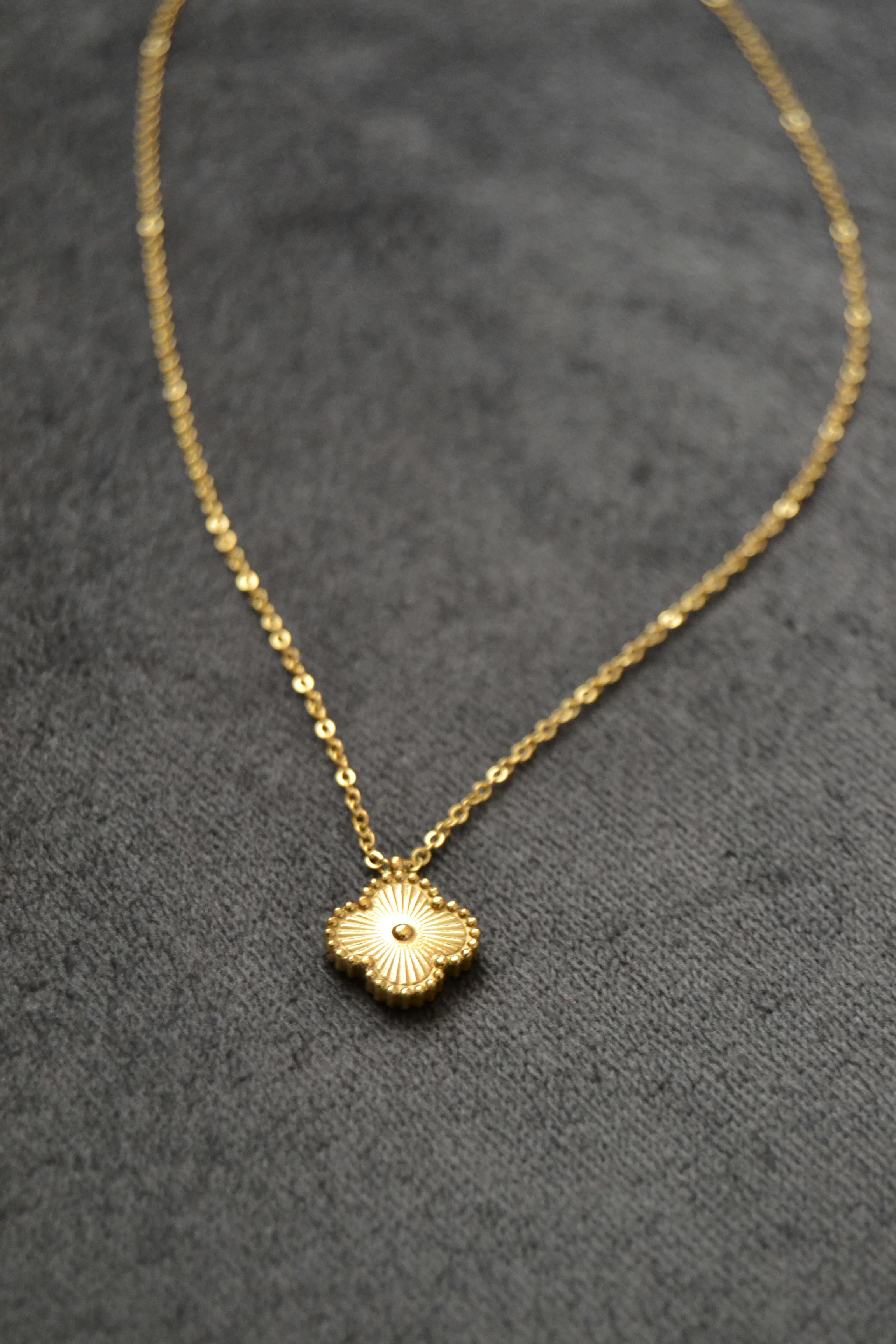
From the intricate allure of a shimmering golden pendant to the raw simplicity of a carved bone, humanity’s enduring fascination with adornment has driven innovation and artistry across millennia. Each archaeological discovery, whether a delicate shell bead or a robust metal bracelet, offers a profound glimpse into the lives, beliefs, and remarkable ingenuity of our distant ancestors. These artifacts are not merely objects; they are storytellers, revealing the complex tapestry of human culture and technological advancement from the dawn of time.
Recent revelations have once again pushed the boundaries of our understanding, unveiling both the sheer antiquity of human presence in North America and the astonishing resourcefulness with which early humans harnessed unexpected materials. Archaeologists are piecing together a vivid picture of ancient life, from the earliest symbolic expressions to sophisticated metallurgical practices that predated conventional timelines. These groundbreaking finds challenge preconceived notions and invite us to reconsider the depth of human creativity and adaptability.
Join us on an extraordinary journey that traverses continents and millennia, exploring a series of pivotal archaeological discoveries that illuminate the profound connections between human craft, cultural identity, and the very materials of our planet – and beyond. This expedition will delve into seven crucial findings, ranging from evidence of human activity dating back 18,000 years to the exquisite mastery of meteorite iron, each piece adding another layer to the compelling narrative of early human artistry.
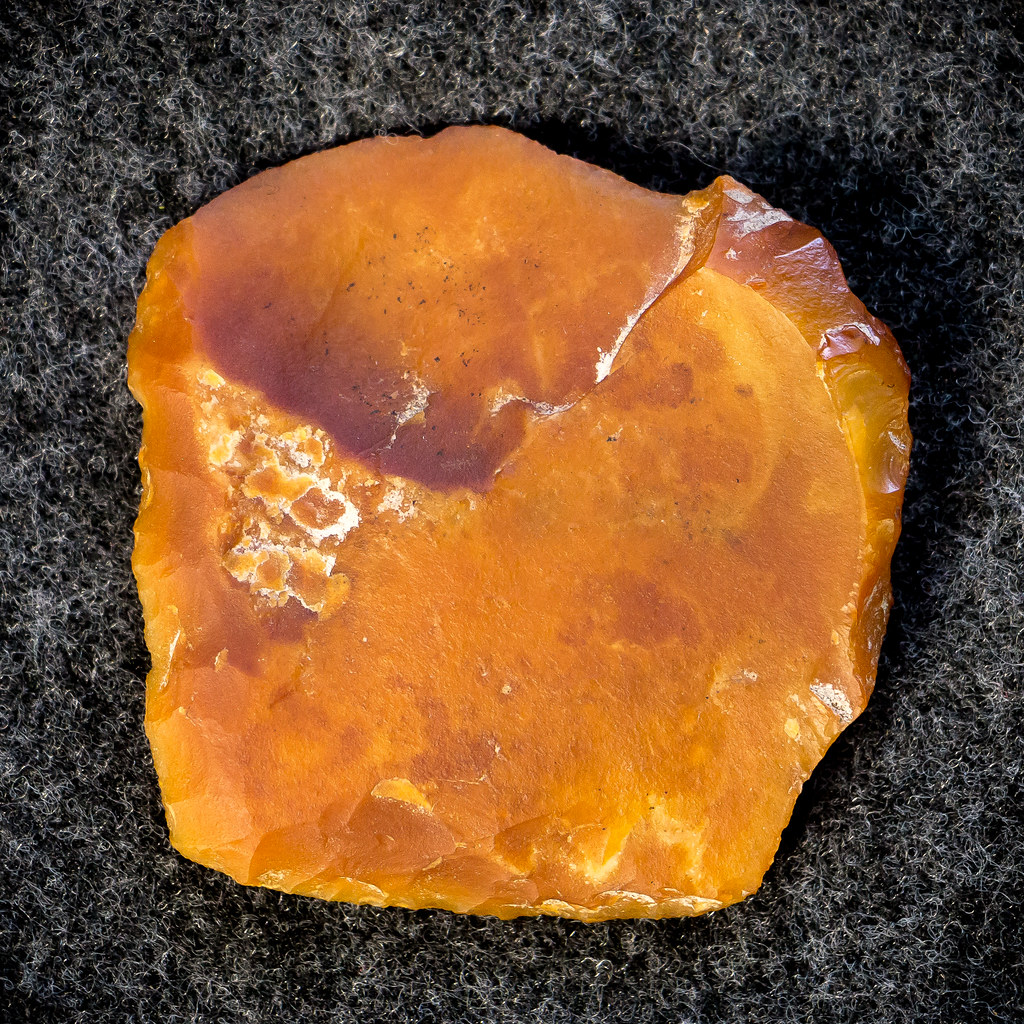
1. The Startling 18,000-Year-Old Human Occupation at Rimrock Draw Rockshelter
Archaeologists have made an incredible discovery at the Rimrock Draw Rockshelter in Eastern Oregon, providing evidence that humans occupied the site more than 18,000 years ago. This groundbreaking find, described as “startling” by its discoverers, significantly pushes back the archaeological record of human life in North America by an astounding 2,000 years. Led by Dr. Patrick O’Grady of the University of Oregon, this research offers invaluable insights into the earliest inhabitants of the continent.
The team uncovered a compelling array of artifacts, including stone tools and fragments of teeth from extinct species such as bison and camel. The age of these findings was meticulously determined through radiocarbon dating of enamel from the tooth fragments, which indicated they dated back 18,323 years ago. Given that the stone tools were unearthed from a deeper sediment layer, they must, by archaeological logic, be even older, establishing the Rimrock Draw Rockshelter as potentially the oldest-known site of human occupation in North America.
These scientific findings resonate deeply with the rich oral histories passed down by the tribal nations of the region. Professor David Lewis, an anthropologist at Oregon State University, notes that these early dates align well with tribal stories about witnessing monumental geological events, such as the Missoula floods, which occurred between 18,000 and 15,000 years ago. Such narratives also speak of encountering “giant animals, monsters on the land,” a vivid echo of the megafauna whose remains have been found at the rockshelter, suggesting ancient interactions that became ingrained in collective memory.
The excavations at the site have been ongoing since 2011, a collaborative effort thanks to a partnership agreement with the Bureau of Land Management. A pivotal moment came in 2012 when Dr. O’Grady and his team discovered camel teeth fragments buried beneath a layer of volcanic ash, itself deposited by an eruption of Mount St. Helens over 15,000 years ago. Digging deeper into these ancient layers, the researchers also unearthed two exquisitely crafted orange agate scrapers, one in 2012 and another in 2015.
One of these scrapers, remarkably, still retained a residue of bison blood, offering a direct and tangible link to how this ancient tool would have been utilized by its human creators. Heather Ulrich, the Oregon/Washington archaeology lead at the Bureau of Land Management, hailed these findings as a “very exciting development,” underscoring how these new dates “push our archaeological knowledge of human occupation in North America even farther, perhaps the oldest yet.” Further investigations are already underway, promising to reveal even more secrets from this extraordinary site.

2. The Earliest Adornments: 100,000-Year-Old Shell Beads and Ancient Origins of Jewelry
Long before the glimmer of gold or the strength of iron, jewelry profoundly captured the human imagination, serving as a powerful expression of identity and status. Indeed, the history of personal adornment stretches back tens of thousands of years, evolving from the simplest natural materials to the intricate masterpieces we recognize today. The oldest known jewelry, a testament to humanity’s innate desire to beautify, dates back an astonishing 100,000 years, crafted from humble Nassarius shells.
These ancient pieces were skillfully fashioned by early humans who utilized readily available natural materials such as bones, teeth, and stones. Significant archaeological sites around the world have yielded evidence of these primordial adornments. For instance, the renowned Blombos Cave in South Africa has revealed shell beads estimated to be approximately 75,000 years old, showcasing sophisticated craftsmanship for their time. Even older, in Israel, archaeologists discovered shell beads that are around 100,000 years old, providing compelling evidence that early humans in diverse geographical regions shared a common appreciation for personal adornment and symbolic expression.
The timeline of early jewelry continues to be redefined by modern archaeological expeditions. In 2010, another discovery of 100,000-year-old shell beads in Morocco further cemented this ancient practice, pushing back the established timeline of early jewelry and highlighting its widespread importance. These finds underscore that the creation and wearing of jewelry are deeply ingrained in human culture, predating many other forms of artistic expression and demonstrating a complex cognitive capacity for symbolism and self-expression in early societies.

3. Pioneering Metalwork: The First Use of Gold in Ancient Egypt and Sumer
As human societies progressed, the materials and techniques used for jewelry production evolved, largely dictated by the resources available in their immediate environments. Yet, even with simple tools, early artisans displayed remarkable creativity and skill, transforming raw elements into objects of beauty and significance. The advent of metalworking marked a profound turning point, elevating the art of adornment to new heights of sophistication and durability.
Ancient Egyptians emerged as pioneers in the realm of precious metals, being among the first civilizations to extensively utilize gold in jewelry, a practice dating back to approximately 3,000 BCE. For the Egyptians, gold was far more than a mere symbol of wealth; it held profound religious significance, often incorporated into elaborate burial rituals and imbued with spiritual power. Their mastery of this luminous metal allowed for the creation of breathtaking pieces, designed not only for the living but also to accompany the deceased into the afterlife.
Concurrently, in Mesopotamia, the Sumerians, around 2,500 BCE, also showcased extraordinary skill in crafting intricate jewelry. They expertly combined gold, silver, and various semi-precious stones, creating stunning adornments that reflected their rich cultural and religious landscapes. The Royal Cemetery of Ur, for example, famously revealed a treasure trove of these ancient masterpieces, including magnificent gold headdresses and elaborate necklaces that stand as enduring testaments to Sumerian artistry and their advanced metallurgical techniques.
Beyond these specific cultures, the broader history of metalworking for jewelry is equally compelling. Early jewelry makers initially employed basic tools like flint and bone for carving and shaping, but a significant technological leap occurred around 4,000 BCE with the introduction of more sophisticated metalworking techniques, such as hammering and casting. This innovation allowed for the creation of more intricate and durable designs, fundamentally altering the trajectory of jewelry production and laying the groundwork for future metallurgical advancements.

4. The Polish Meteorite Iron Jewelry: A Groundbreaking Early Iron Age Discovery
In an extraordinary turn of events, archaeologists have unearthed a collection of jewelry and ornaments from an ancient Polish cemetery that contains iron from meteorites, presenting a truly unexpected material for adornment. This groundbreaking find, dating back to the Early Iron Age, significantly suggests that the people inhabiting the region were skilled metalworkers far earlier than previously assumed. It compels us to reconsider the depth of metallurgical knowledge and the innovative spirit of ancient European cultures.
The extensive study, which was meticulously published in the Journal of Archaeological Science: Reports, meticulously analyzed 26 distinct jewelry samples. These pieces included various bracelets, an ankle ring, and a brooch, all originating from an ancient burial site located in Poland. Through rigorous scientific analysis, researchers conclusively discovered that a significant portion of these artifacts, specifically four pieces, contained iron that definitively came from meteorites, linking earthly craft with celestial origins.
The researchers themselves underscored the immense importance of this discovery, explaining: “Although the number of samples is relatively small, this collection represents one of the largest known assemblages of meteorite iron artifacts ever found at a single archaeological site.” This statement is crucial, as it elevates the Polish site to a position of global significance, placing it alongside other renowned locations for meteoritic iron finds, such as those associated with ancient Egypt, and thus enriching our understanding of the widespread use of cosmic materials in antiquity.

5. Mastering Cosmic Metal: Lusatian Culture’s Skill with Meteorite Iron
The intriguing meteorite iron artifacts were discovered at two Early Iron Age cemeteries in southern Poland, Częstochowa-Raków and Częstochowa-Mirów, situated just six kilometers apart. Scientists now believe that the people of the Lusatian Culture, who flourished in these lands between 750 BCE and 600 BCE, possessed the advanced knowledge required to melt and work with meteorite iron. Their sophisticated skills enabled them to shape this unique material into distinct and intricate patterns on their jewelry, demonstrating a profound understanding of metallurgy.
To unravel the composition of these ancient treasures, archaeologists employed cutting-edge techniques, including X-ray fluorescence and electron microscopy. Their analysis revealed a remarkable blend: the objects contained both cast iron, likely derived from terrestrial metal sources, and the unmistakable meteorite iron. It is posited that the cast iron was imported, potentially through established trade routes from ore deposits nestled in the Alps or the Balkans, but was skillfully forged locally. This imported raw material was then ingeniously supplemented with extraterrestrial iron, showcasing a blend of local innovation and external resources.
Further in-depth analysis was able to pinpoint the exact origin of the meteorite iron, identifying it as an “exceptionally rare” space rock—an ataxite meteorite, renowned for its rich nickel content. The researchers emphatically noted that “Extensive examination suggests that only one meteorite source was used,” implying that these cosmic pieces likely originated from a single, locally discovered meteorite fall rather than being imported from distant sources. This finding compellingly challenges previous assumptions, proving that the ancient inhabitants of southern Poland were capable of working with iron, a complex and challenging metal, long before archaeologists had previously thought possible.

6. Challenging Assumptions: Meteorite Iron’s Shift from Symbol to Resource in Poland
The discovery of meteorite iron jewelry in Poland offers a fascinating glimpse into a nuanced shift in how ancient societies perceived and utilized this rare material. Throughout the Bronze Age, before the widespread discovery of terrestrial iron smelting, meteorite iron was highly valued, often imbued with immense symbolic significance, associated with celestial power, and reserved for elite groups. Its scarcity made it a material of prestige and awe, linking its wearers to the heavens.
However, the Polish study compellingly suggests that by the Early Iron Age, this perception had evolved. The use of meteorite iron in the Lusatian Culture “seems to have lost its symbolic significance” to some extent. Instead of being solely a sacred emblem, it was “intentionally used to create specific patterns in jewelry,” indicating a more practical and aesthetic application. This innovative use of cosmic metal for deliberate patterning occurred almost a millennium before the development of famous metallurgical achievements like wootz steel and Damascus steel, renowned for their intricate surface designs.
Dr. Karol Dzięgielewski from Jagiellonian University further elucidated this shift, noting that Poland, during this period, had no evidence of local iron smelting. This crucial detail implies that any terrestrial iron present in these artifacts would have been imported. Conversely, the meteorite iron was “almost certainly local,” strongly supporting the idea that ancient craftsmen collected and worked with this fallen celestial material not long after it impacted Earth. This suggests it was viewed as an accessible and workable raw material, rather than an exclusively sacred one.
One of the most remarkable aspects of this find is the evidence of intentional mixing. The “presence of varying compositions within individual artifacts hints that metalworkers mixed meteoritic iron with smelted iron to achieve specific aesthetic or structural effects.” This sophisticated technique showcases an advanced understanding of material properties and metallurgy, revealing a surprising level of innovation that significantly broadens our knowledge of ancient ironworking methods and the creative ways cultures adapted available resources.
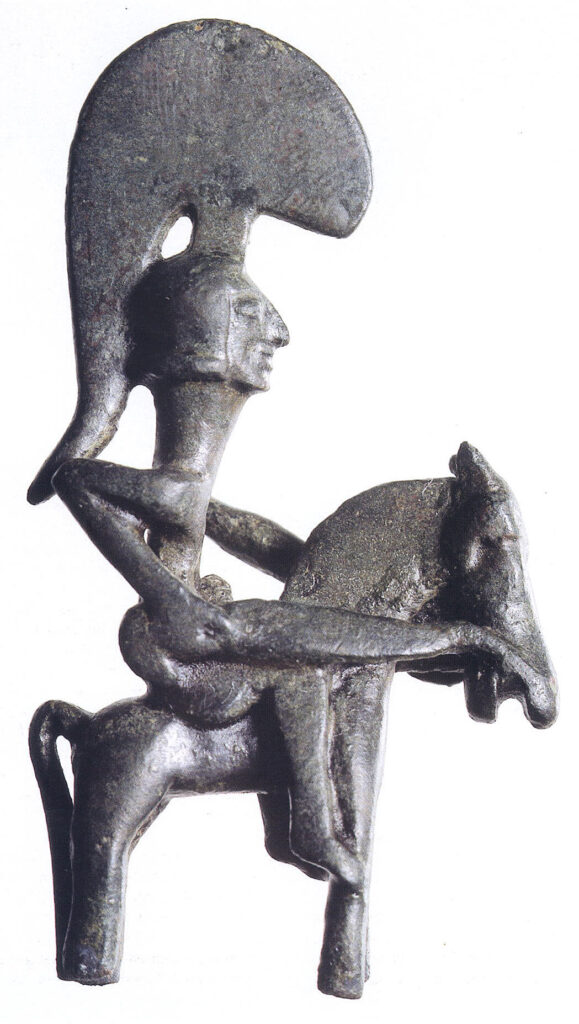
7. The Treasure of Villena: Unveiling Meteoritic Iron in the Iberian Bronze Age
Amidst a dazzling cache of glittering golden treasures from the Iberian Bronze Age, archaeologists made an even more profound discovery: a pair of corroded objects that might very well be the most precious of all. Known as the Treasure of Villena, this collection of 66 predominantly gold artifacts was unearthed more than 60 years ago in 1963 in what is now Alicante, Spain. It has since been rightly celebrated as one of the most significant examples of Bronze Age goldsmithing in the Iberian Peninsula, and indeed, across Europe, showcasing extraordinary craftsmanship and artistic flair.
The objects in question, a dull bracelet and a rusted hollow hemisphere adorned with gold, were initially perplexing due to their seemingly “ferrous” appearance. Researchers have now confirmed that these pieces were forged not out of metal from beneath the ground, but with iron from meteorites that descended from the sky. This incredible finding, led by Salvador Rovira-Llorens, then head of conservation at the National Archeological Museum Spain, strongly suggests that metalworking technology and techniques in Iberia were far more advanced than previously imagined, over 3,000 years ago.
The age determination of the entire collection presented a significant puzzle, primarily due to these two iron-looking artifacts. While the gold materials within the Treasure of Villena have been securely dated to between 1500 and 1200 BCE, the Iron Age—a period defined by the widespread replacement of bronze with smelted terrestrial iron—did not commence in the Iberian Peninsula until approximately 850 BCE. This chronological discrepancy made it challenging to reconcile the ferrous objects with the broader context of the treasure, creating an archaeological enigma.
The resolution to this dilemma lay in understanding the unique properties of cosmic iron. Researchers knew that iron ore from Earth’s crust is not the sole source of malleable iron. There are numerous pre-Iron Age iron artifacts found globally that were forged from meteoritic material. The key to differentiation lies in chemical composition: iron from meteorites possesses a much higher nickel content than iron extracted from the Earth’s ground. With this knowledge, researchers obtained permission from the Municipal Archaeological Museum of Villena, custodians of the collection, to meticulously test the two artifacts.
Despite a high degree of corrosion, which could alter the elemental makeup, samples from both the hemisphere and the bracelet were subjected to mass spectrometry. The results unequivocally indicated a composition strongly suggestive that both objects were indeed made from meteoritic iron. This scientific confirmation neatly resolves the chronological puzzle, aligning the iron artifacts with the rest of the collection and dating them to around 1400 to 1200 BCE. As the researchers articulated in their paper: “The available data suggest that the cap and bracelet from the Treasure of Villena would currently be the first two pieces attributable to meteoritic iron in the Iberian Peninsula, which is compatible with a Late Bronze chronology, prior to the beginning of the widespread production of terrestrial iron.”

8. The Enigma of Villena: Dating Meteoritic Iron in Pre-Iron Age Iberia
The Treasure of Villena presented archaeologists with a captivating chronological puzzle concerning two iron artifacts. While its magnificent gold pieces dated to between 1500 and 1200 BCE, the Iberian Iron Age, with widespread terrestrial iron, began much later, around 850 BCE. This significant temporal gap created an archaeological enigma, challenging prior understandings of early metalworking in the region.
The resolution lay in understanding metallurgical history: terrestrial iron ore wasn’t the only source. Many pre-Iron Age artifacts globally were forged from meteoritic material, “iron from the sky,” which possesses a much higher nickel content. Researchers obtained permission to meticulously test the Villena artifacts: a dull bracelet and a rusted hollow hemisphere.
Despite corrosion, mass spectrometry results strongly indicated both objects were crafted from meteoritic iron. This confirmed they aligned with the gold pieces, dating to around 1400 to 1200 BCE. As researchers noted, these were “the first two pieces attributable to meteoritic iron in the Iberian Peninsula,” compatible with a Late Bronze chronology, preceding widespread terrestrial iron production. Further non-invasive techniques are explored to solidify these findings.
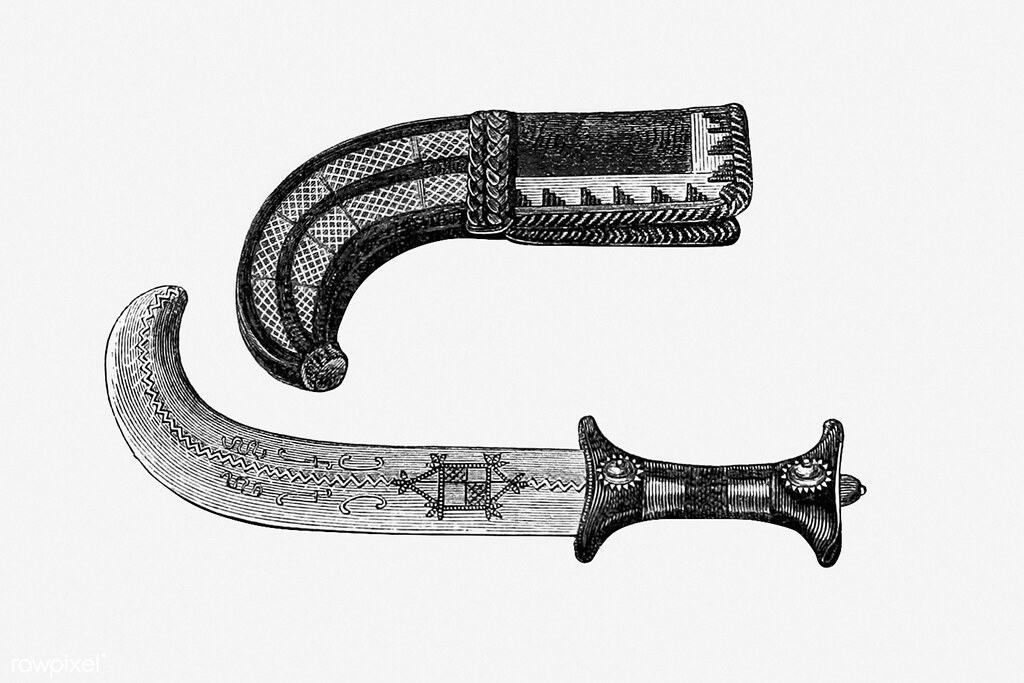
9. The Prestigious Past of Meteorite Iron: From Tutankhamun’s Dagger to Mesopotamian Tombs
For millennia, humanity was captivated by “iron from the sky.” Meteorite iron, rare and exotic, was imbued with immense symbolic significance in ancient cultures, often linked to celestial power and divine authority. Its scarcity made it a material of extraordinary prestige, reserved for elites and incorporated into ritualistic or royal objects.
The iconic dagger from Pharaoh Tutankhamun’s tomb exemplifies meteorite iron’s esteemed status. This exquisitely crafted weapon showcases advanced Egyptian metallurgy and their reverence for extraterrestrial material. Its presence in a royal burial signifies unparalleled value, linking the pharaoh to both earthly power and celestial blessings.
Similar artifacts unearthed in Mesopotamian and Chinese tombs further illustrate meteorite iron’s global prestige during the Bronze Age. These finds reveal a world where cosmic metals were sacred elements, enhancing owners’ status. However, as terrestrial iron smelting grew, Polish findings suggest a shift; meteorite iron gradually lost some exclusive symbolic significance, becoming a practical resource. Yet, its deep historical connection to prestige remains, seen in ancient Egyptian jewels at the UCL Petrie Museum.

10. Cultural Identity and Spiritual Power: Jewelry in Ancient Egypt and Greece\
Beyond adornment, jewelry in ancient civilizations served as a powerful language, articulating cultural identity, social standing, and profound spiritual beliefs. Each design and material told a story of a society’s values, its connection to the divine, and an individual’s place. Understanding ancient jewelry is to delve into the very heart of these bygone cultures.
In ancient Egypt, jewelry transcended aesthetics, becoming intrinsic to religious life and the afterlife. Pieces of lustrous gold and vibrant semi-precious stones were deeply intertwined with spiritual power and burial rituals. Egyptians believed gold, with its unchanging brilliance, embodied the gods’ flesh, making it ideal for the deceased’s eternal well-being. Their mastery of gold, from 3,000 BCE, yielded breathtaking creations for both the living and the eternally departed.
The ancient Greeks also used jewelry to symbolize power and social status, with intricate designs featuring mythical figures and divine attributes. These adornments were declarations of allegiance and status markers. In ancient Rome, laws dictated who wore certain adornments, while Native American tribes used jewelry for tribal affiliation and spiritual meaning. Across diverse ancient landscapes, jewelry consistently shone as a beacon of cultural identity and spiritual conviction.
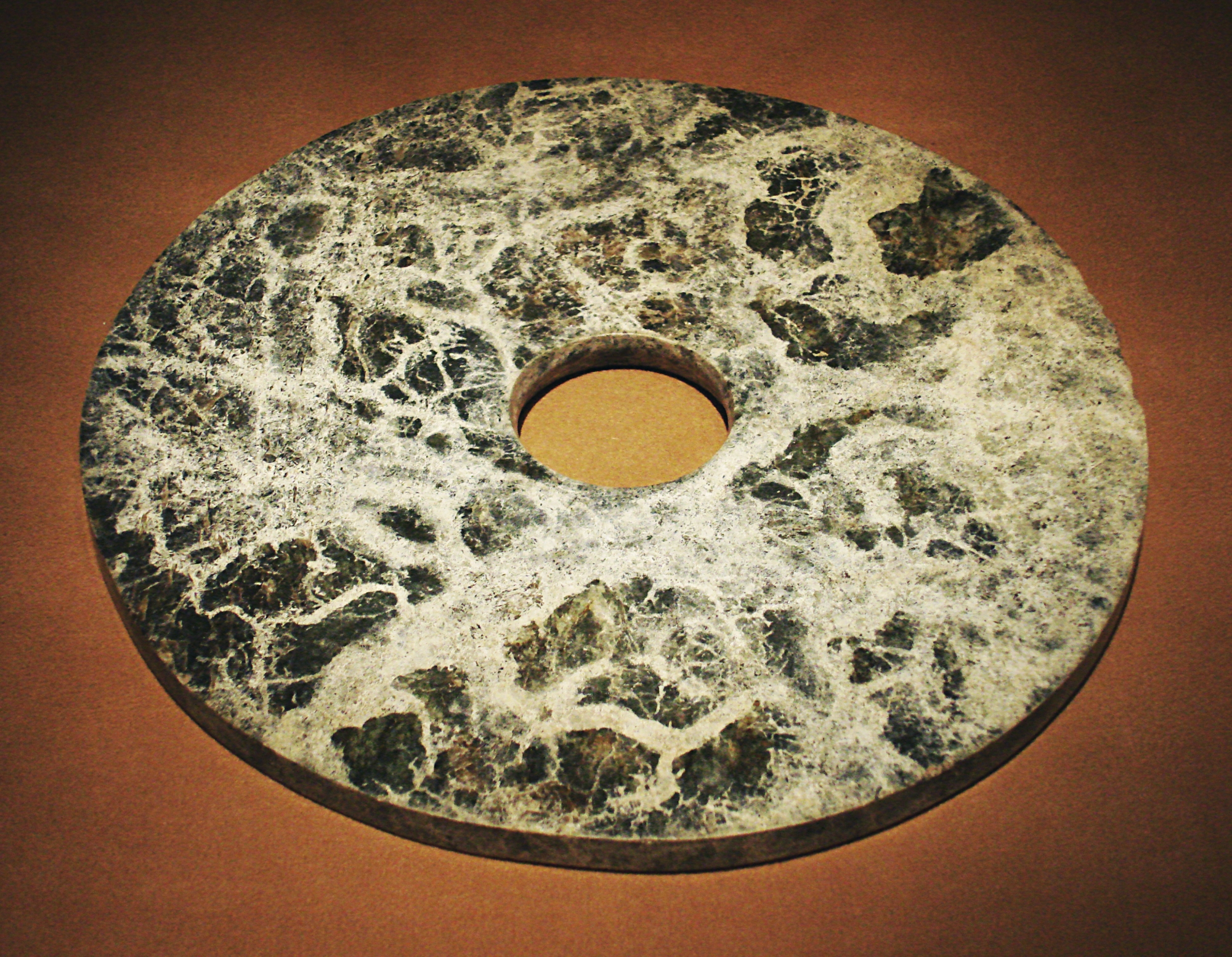
11. Symbolic Expressions: Jade in China and Celtic Knotwork
Jewelry, in its most profound sense, is a medium for symbolic expression, a silent language conveying deep-seated beliefs, values, and cultural narratives. From the serene elegance of jade in ancient China to the intricate spirals of Celtic knotwork, these adornments reveal how different civilizations represented their understanding of the world through tangible forms.
In ancient China, jade held a venerated status, symbolizing purity, moral integrity, and immortality. Carved into pendants and ceremonial objects, jade was believed to possess protective powers and connect the living with the spiritual realm. Its smooth touch and subtle hues made it an embodiment of virtue, representing harmony and continuity—a profound artistic choice enduring for millennia.
Meanwhile, the Celts of ancient Europe expressed their rich mythological and spiritual world through complex, interwoven knotwork designs. These endless knots, spirals, and braids symbolized eternity, the interconnectedness of all life, and the cyclical nature of existence. Other cultures like Hindu, using jewelry in ceremonies to symbolize deities, and Vikings, with animal designs for wealth and status, further underscore humanity’s impulse to infuse adornment with deeper meaning.
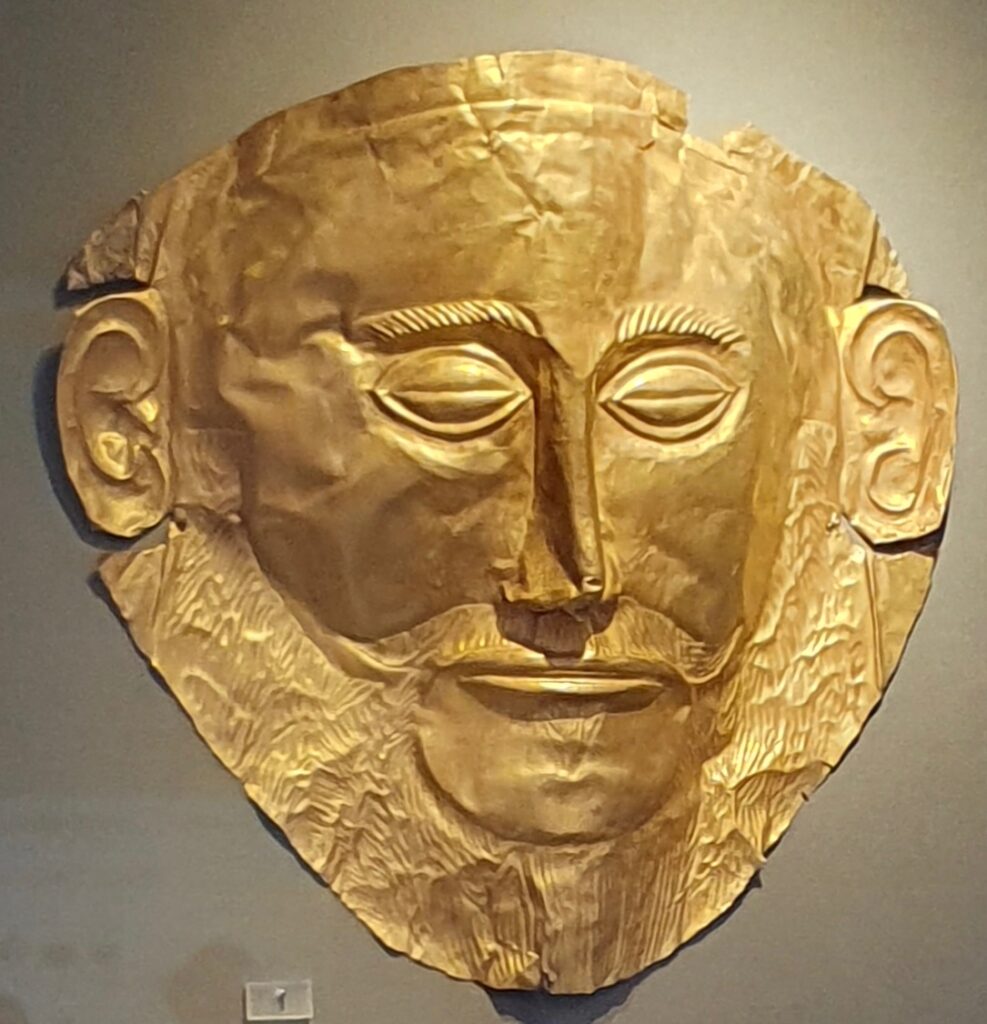
12. **Famous Ancient Masterpieces: From Agamemnon’s Mask to the Royal Cemetery of Ur
Throughout history, certain pieces of ancient jewelry have become iconic masterpieces, celebrated for their beauty and the historical narratives they encapsulate. These extraordinary creations offer a direct window into the unparalleled artistry, technical prowess, and cultural values of their civilizations, continuing to inspire awe.
One such captivating relic is the Mask of Agamemnon, discovered in Mycenae, Greece. This striking gold funeral mask, dating to approximately 1,500 BCE, is steeped in legendary associations. Its meticulous craftsmanship and dignified presence make it a powerful symbol of Mycenaean funerary practices and royal status.
Equally renowned for historical significance is the death mask of Pharaoh Tutankhamun. Fashioned from solid gold and adorned with precious stones, this mask is one of the most famous pieces of ancient Egyptian jewelry. It provided the boy-king with a divine image for eternity, showcasing the extraordinary skill of Egyptian goldsmiths.
Further east, the Royal Cemetery of Ur in Mesopotamia yielded stunning jewelry, including magnificent gold headdresses and elaborate necklaces from around 2,500 BCE. The Minoan civilization on Crete also produced exquisite gold jewelry like the “Bee Pendant” from around 1,700 BCE. Together, these masterpieces narrate a global story of human creativity and an enduring quest for beauty.

13. The Evolution of Ancient Jewelry Styles: From Bronze Age to Byzantine Elaborations
The trajectory of jewelry design mirrors human history, with each era introducing new materials, techniques, and evolving aesthetics. From early adornments to imperial opulence, styles transformed, reflecting shifts in culture, technology, and fashion—a fascinating chronicle of human ingenuity.
The Bronze Age marked a significant turning point, with bronze and copper allowing more durable and intricate designs like spiraled armlets. This laid groundwork for future metallurgy. Into the Iron Age, jewelry became more elaborate as iron’s availability spurred innovations, allowing greater detail and robustness, reflecting technological advancements. Other metals and precious stones were increasingly incorporated, signifying growing societal complexity.
Centuries later, the Byzantine Empire became renowned for extraordinary jewelry, epitomizing imperial grandeur and religious devotion. Artisans elevated goldsmithing, often featuring intricate filigree, cloisonné enamel, and abundant precious gems with dominant religious motifs. These elaborate creations served as powerful expressions of imperial power and Christian faith, influencing design for centuries. The Renaissance, too, saw a revival of classical styles.

14. Modern Discoveries Reshaping History: Global Insights into Ancient Craftsmanship
The story of ancient jewelry is an continuously unfolding narrative, frequently rewritten by modern archaeological discoveries. Each new excavation offers fresh insights into ancient cultures’ ingenuity and craftsmanship, challenging long-held assumptions and expanding our understanding of humanity’s past.
A prime example occurred in 2010 when archaeologists unearthed 100,000-year-old shell beads in Morocco. This pushed back the timeline of early jewelry, reinforcing that personal adornment is a deeply ingrained and ancient aspect of human culture, appearing much earlier and more widespread. It revealed sophisticated cognitive capacity for symbolism and self-expression, providing crucial global insight into human artistry.
Other astonishing finds include a 40,000-year-old bracelet from Siberia, suggesting advanced jewelry-making skills. More recently, a 3,000-year-old gold necklace in Peru indicated ancient Andean civilizations highly valued gold. Additionally, gold jewelry from the Varna Necropolis in Bulgaria dates back to 4,500 BCE. These discoveries offer critical global insights, demonstrating that sophisticated craftsmanship was a widespread human endeavor, constantly reshaping our historical understanding.

15. Preserving Legacy: Showcasing Ancient Adornments in World-Renowned Museums
The enduring legacy of ancient jewelry is most vividly experienced today within the hallowed halls of the world’s most renowned museums. These institutions serve as vital custodians of our shared heritage, preserving these precious artifacts and making them accessible to global audiences. Through meticulous curation, museums connect us directly with the beauty, craftsmanship, and profound stories embedded within ancient adornments.
Among these esteemed repositories, the British Museum in London stands out for its extensive collection of ancient Egyptian jewelry. Visitors can marvel at pieces from Tutankhamun’s tomb, experiencing the dazzling artistry and spiritual significance that once accompanied pharaohs. The museum’s comprehensive display provides an unparalleled journey through Egyptian history, showcasing their goldsmithing techniques and cultural reverence.
Across the Channel, the Louvre in Paris boasts a remarkable collection of ancient Greek and Roman jewelry. Here, one can witness the elegant designs, intricate detailing, and classical motifs. From delicate gold filigree to elaborate gemstone settings, the Louvre’s exhibits illuminate the social distinctions and sophisticated craftsmanship that defined jewelry in the classical world.
On the other side of the Atlantic, the Metropolitan Museum of Art in New York offers a diverse collection spanning ancient jewelry from various cultures and time periods. This broad scope allows visitors to appreciate the universal human drive for self-expression. The National Museum of Anthropology in Mexico City also displays stunning Mesoamerican jewelry. These world-class museums play an indispensable role in safeguarding treasures, ensuring ancient adornment continues to educate and inspire.
**An Enduring Spark of Creativity**
As our incredible journey through the world of ancient adornments concludes, it becomes undeniably clear that humanity’s fascination with jewelry is not merely a fleeting trend but an intrinsic, enduring aspect of our collective story. From the raw simplicity of a 100,000-year-old shell bead to the breathtaking complexity of meteorite iron intricately patterned by the Lusatian culture, each artifact illuminates a chapter of human ingenuity and cultural depth. These ancient treasures, whether serving as symbols of power, expressions of spiritual belief, or markers of identity, continuously remind us of the remarkable creativity and adaptability of our ancestors. They challenge our assumptions, push back our timelines, and invite us to look closer, to listen to the silent stories these extraordinary objects tell. The shimmering legacy of ancient jewelry continues to sparkle, inspiring us to ponder the profound connections between human craft, the materials of our world, and the boundless depths of our imagination.



